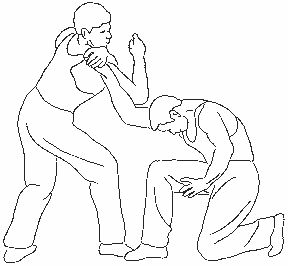Self-Defense
The term “Qin Na”comprises all methods of joint dislocation taught in Chinese Martial Arts. Borrowed and improved by the Japanese, these methods are at the origin of Aikido. They are techniques using the properties of human joints. At the beginning we mostly work on the wrist.
Very efficient in self-defense, Qin Na demand practice and repetition in order to be easily and correctly used. Once learned, their use becomes almost instinctive. The great advantage of these techniques is that they work irrespectively of the body of the persons involved, since the physical force is not required for their efficiency.
Some history
Punches, kicks, projections and Qin Na cover the Chinese self-defense techniques (free hands). Qin Na are divided in four branches:
- grabbing of the muscles (Fen Jin)
- dislocating of the articulations (Cuo Jie)
- stopping the energy from circulating (Bi Qi)
- attacking the vital points (Dian Xue)
The Quin Na is incorporated in many Chinese styles. The techniques used can be summarized by some ‘key-words’. Among others, here are the most common:
- Na (‘grab’), grasp with one hand the arm or the leg of the opponent
- Chan (‘roll up’), with both hands wind up the wrist of the opponent in order to bend his arm
- Bei (‘back’), bend his arm against his back
- Ya (‘push’), push on one articulation
- Deng (‘push with the foot’), press with your foot the arm of the opponent for better upholding
- Suo (‘block’), immobilize or strangle the opponent
- Fen (‘separate’), disjoin the fingers of the opponent
- Kou (‘pick’), with the fingers, attack the nose, eyes or cheek for pinching out or pulling off
- Tuo (‘lift’), press an articulation by lifting it
- Dian (‘attack the vital points’)

